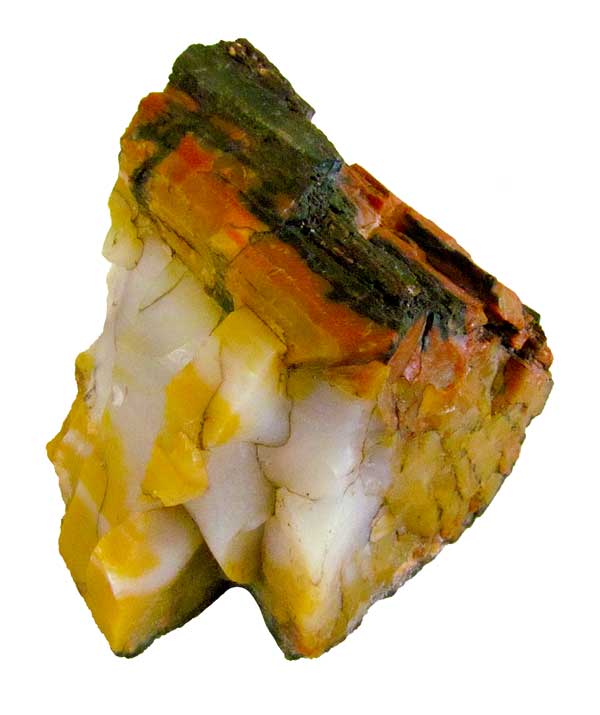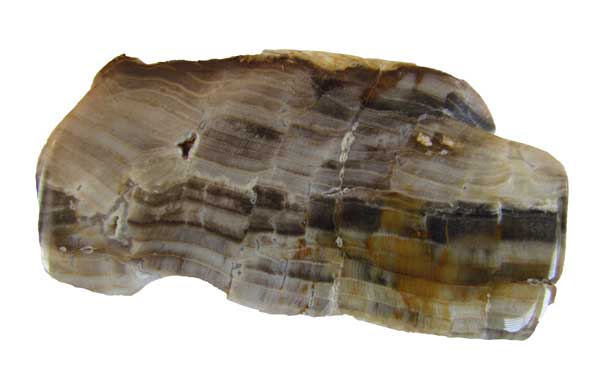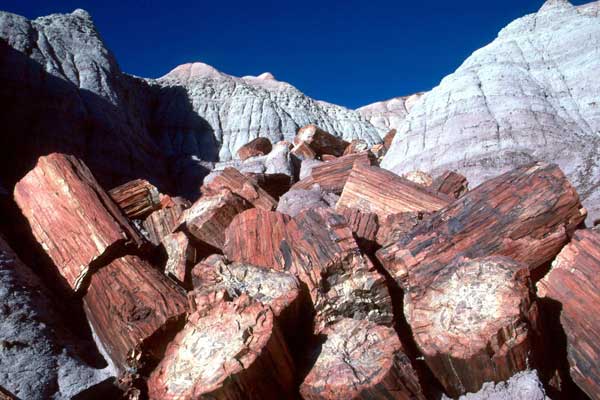Sign up for Lesson Plans, discounts & more!
Petrified Wood
Trees Turned to Stone

Petrified wood is a term used for fossilized wood. This term is taken from the latin word Petro meaning ‘rock' or ‘stone.’ Combined with ‘wood,’ this term literally means ‘rock wood.’ When a tree dies, it can go through a type of fossilization process, called permineralization. Basically, this means that when the tree dies, it is turned to stone due to small amount of mineral deposits filling the cells of the organism. Minerals from ground water, lakes, or oceans seep into the pores of organic tissue and leave deposits, slowly creating crystals within it. This process continues on the inner surface of the walls until the central cavity of the cell is completely filled. This process is also referred to as petrification.
Petrification usually happens underground, as the plant matter dies and is covered by sediment, volcanic ash, etc. If the ground where the trees are buried has lots of water in it the wood is protected from oxygen. Decomposition required oxygen, so the plant matter does not decompose, allowing petrification to happen. This can happen rather quickly due to the fact that water is already underground. How convenient! It infiltrates the organic matter, and begins the petrification process. When this occurs in highly wooded area, such as forests, its called……you guessed it, a petrified forest.
There are many petrified forest areas all around the world. There are about a dozen in the US alone. The Petrified Forest Nation Park in Northeast Arizona, is a great example. It is probably the largest area with petrified wood specimens. Specimens of petrified wood from this area are highly prized for their color and because the fine grain of the fossilized rock takes a high polish. Collecting specimens in the park is illegal of course but the area with petrified wood is much bigger than the park.
About 225 million years ago, this area was a covered by a dense forest, with enormous coniferous trees up to 9 feet in diameter and 200 feet tall. Many natural occurrences, such as floods, storms, volcanic eruption occurred. I mean, we’re talkin’ millions of years. When the trees fell, they were often buried by the river sediments, and petrification would occur. The ash from the various volcanic eruptions were high in silicate and other minerals, creating petrified wood.

Petrified Wood For People
Petrified wood can also be enjoyed at home. It can be cut into shapes for making jewelry or polished, as part of a fossil collection. The quality and color of the petrified wood depends on the type of mineral, or minerals, that petrify it. For example, pure forms of silicate minerals, which are the most common minerals in this process, are colorless. However, minerals such as manganese, iron and copper can give it a verity of hues. Here are some examples of different types of mineral deposits, and the colors they yield:
Carbon- black
Chromium, cobalt and copper yield a green/blue
Iron oxides- red, brown, yellow
Manganese-pink/orange
mangaize oxides- black/yellow
silicate dioxides-clear, white, greys
You can find polished and rough specimens of Petrified Wood for sale at fossilicious.com.
Check out some of the Educational Materials for sale on our sister site fossilicious.com.

interested in more? If so, you may want to check out our other sites:
fossilicious.com - Our online fossil and mineral rock shop.
rocksandminerals4u.com - An educational site about rocks, minerals, and geology.
Geologic Time Geologic Time Line
Cenozoic Era
Quaternary
Neogene
Paleogene
Mesozoic Era
Cretaceous
Jurassic
Triassic
Paleozoic Era
Permian
Carboniferous
Devonian
Silurian
Ordovician
Cambrian
Archean Time
Hadean Time
Teachers Resources
Activities for Education and Fun
Earth Science Lesson Plans
Activities For Kids
Fossil Lesson Plans
Fossil Activities
Education Articles
Coloring Pages
Dinosaur Coloring Pages
Montessori Materials
Geology Club
Fossil Hunting
 |
 |
 |





